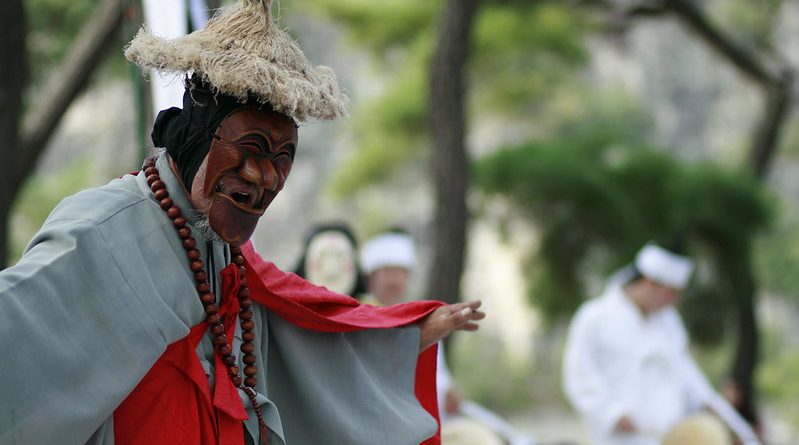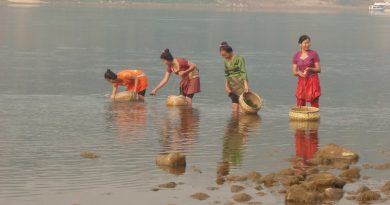The Dancers of Hahoe
Hahoe, in the Northern Geyeongsang province of South Korea, is where Dance is celebrated all year round. It is most famous for its mask festival in late September
Apart from a few choice modern appliances, precious little has changed over the years in Hahoe villagers way of life so if you want to experience a traditional festival or ancient culture, this is the ideal place to go. Hahoe’s dance tradition is not just for the sake of the tourists; Korea has a very respectful and interactive relationship with its arts and crafts traditions and just because it is a modernised country does not mean to say that the more rural villages have succumbed to becoming a rural pastiche as is often the case in the West. At least in the case of Hahoe, what you see here is what you get – this is a genuine village with roots going back 600 years.
Dances
There are about 120 traditional houses and the villagers still practise a number of rituals and activities as part of their day-to-day life. Among these include folk dances that are practised every weekend, including the drum dances (mugo – a hectic, lively court dance where the participants wear drums around their necks),mask dances (talchum), monk dances (seungmu) and spirit-cleansing dances(salpuri).
Hahoe is also home to one of South Korea’s most entertaining dances, the Byelosingut Talnori. Its role is to mock and satirise the establishment and accompanying the dance are the sounds ofnong-ak, a traditional farmer’s musical percussion quartet. As well as observing the dancing locals often take part in the old game of Nul Dwee Gee – a see-saw game that was once used by women secluded in aristocratic homes to catch a glimpse of the world outside the confines of their walls.
Andong Mask Festival
However, it is the masked dances for with Hahoe is most famous, and the Andong International Mask Festival has been held in Hahoe annually in late September since 1997. The mask dance has been designated as a national treasure, and the drama-dance include some robust audience participation. There is also a museum in the village dedicated to the art.
Whilst a lot of this might seem to be put on just for the tourists, don’t judge it all with western eyes. The events are seen by many tourists from both Korea and the West, but they are still an integral part of Korean culture.




